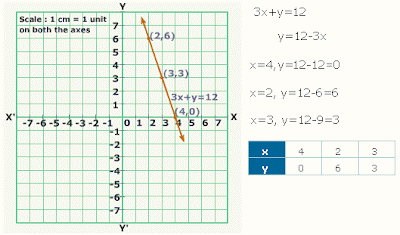Definition:
For any polygon, the angle formed between any one side of the polygon extended and the next consecutive side is called an exterior angle of that polygon. See the figure below:
The sum of an internal angle and its corresponding exterior angle is always 180 degrees. In other words the interior angle and the exterior angle of any polygon are supplementary to each other.
A polygon has as many numbers of exterior angles as interior angles. The following figure shows the exterior angles of a pentagon.
Exterior angles theorem:
The exterior angles theorem can be stated as follows:
“The sum of exterior angles of a polygon is always 360 degrees. “
The sum of exterior angles does not depend on the number of sides of the polygon. The sum of interior angles would be different for different polygons. But the sum of exterior angles of a polygon is always 360 degrees.
Proof of the above theorem:
We know that the sum of the interior angles of a triangle = 180 degrees
The sum of interior angles of a quadrilateral = 360 degrees
The sum of the interior angles of a pentagon = 540 degrees
Therefore the sum of interior angles of a polygon of n sides = (n-2)*180 degrees
Therefore the measure of each interior angle = (n-2)*180/n degrees
Since each interior and its corresponding exterior angles are supplements of each other,
Therefore the measure of corresponding exterior angle = 180 - (n-2)*180/n
Therefore the sum of n such exterior angles
= n*[180 - (n-2)*180/n]
= n*[180n – 180n + 360]/n
= 180n – 180n + 360
= 360 degrees
Hence it is proved that irrespective of the number of sides of the polygon, the sum of exterior angles is always 360 degrees.
Exterior angles of a polygon formula:
The formula for the sum of interior angles of a polygon is
= (n-2)*180 degrees
Therefore each of the interior angle would be
= (n-2)*180/n degrees
Therefore the corresponding exterior angle for that polygon would be:
= 180 - (n-2)*180/n degrees
Thus the formula for finding the measure of each exterior angle of an n sided regular polygon is
180 - (n-2)*180/n degrees
For any polygon, the angle formed between any one side of the polygon extended and the next consecutive side is called an exterior angle of that polygon. See the figure below:
The sum of an internal angle and its corresponding exterior angle is always 180 degrees. In other words the interior angle and the exterior angle of any polygon are supplementary to each other.
A polygon has as many numbers of exterior angles as interior angles. The following figure shows the exterior angles of a pentagon.
Exterior angles theorem:
The exterior angles theorem can be stated as follows:
“The sum of exterior angles of a polygon is always 360 degrees. “
The sum of exterior angles does not depend on the number of sides of the polygon. The sum of interior angles would be different for different polygons. But the sum of exterior angles of a polygon is always 360 degrees.
Proof of the above theorem:
We know that the sum of the interior angles of a triangle = 180 degrees
The sum of interior angles of a quadrilateral = 360 degrees
The sum of the interior angles of a pentagon = 540 degrees
Therefore the sum of interior angles of a polygon of n sides = (n-2)*180 degrees
Therefore the measure of each interior angle = (n-2)*180/n degrees
Since each interior and its corresponding exterior angles are supplements of each other,
Therefore the measure of corresponding exterior angle = 180 - (n-2)*180/n
Therefore the sum of n such exterior angles
= n*[180 - (n-2)*180/n]
= n*[180n – 180n + 360]/n
= 180n – 180n + 360
= 360 degrees
Hence it is proved that irrespective of the number of sides of the polygon, the sum of exterior angles is always 360 degrees.
Exterior angles of a polygon formula:
The formula for the sum of interior angles of a polygon is
= (n-2)*180 degrees
Therefore each of the interior angle would be
= (n-2)*180/n degrees
Therefore the corresponding exterior angle for that polygon would be:
= 180 - (n-2)*180/n degrees
Thus the formula for finding the measure of each exterior angle of an n sided regular polygon is
180 - (n-2)*180/n degrees




